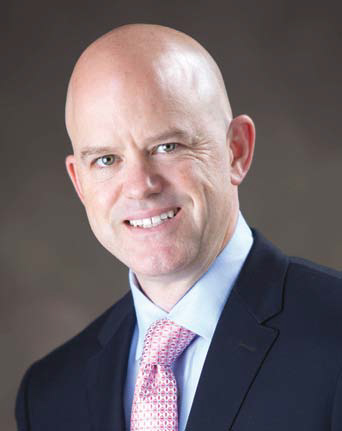Forward Thinker

Tom Butts
Editor-in-Chief
tbutts@nbmedia.com Nearly two decades ago, when the Internet was beginning to catch fire with the public, Sam Matheny, who was then the newly appointed operations manager for the Internet group at Capitol Broadcasting in Raleigh, N.C., was given an assignment: Assess the viability of a new website that his employer was considering investing in. After conducting the customary due diligence, Sam recommended investing in the company, which at that time was called AudioNet, which eventually became broadcast.com, which Mark Cuban sold for $5.7 billion in 1999.
Years later, Sam was instrumental in launching WRAL’s first mobile app, as well as putting Mobile DTV on buses and developing the M-EAS standard.
That kind of foresight helped Sam quickly rise through the ranks at Capitol Broadcasting, which is well known in our industry as a pioneer in broadcast technology firsts. His experience and technical savvy caught the eye of the National Association of Broadcasters, who recently hired him as their new chief technical officer.
I had a chance to talk with Sam recently about his new responsibilities and his view about the future of broadcasting. When it comes to technical know-how, NAB has some of the finest minds in the business and while Sam can be counted among those, his job at NAB is to take the “30,000-foot” view of broadcasting and relate to how it fits into the rapidly evolving media landscape.
“My responsibility is to focus on the long-term health of broadcasting from a technology perspective and to stay abreast of opportunities and trends that are happening in the larger media ecosystem and to help our members understand what they are,” he said. “I’ll also be working on standards issues, new distribution technologies as well as running our labs and looking for opportunities to help our industry find new revenue and distribution.”

Sam Matheny The NAB Labs is not something that gets a lot of press but it does have an impact on how the association assesses and communicates ideas about the future of broadcasting. Currently the lab is involved in testing AM digital as well as working with the Sinclair Broadcast Group and the experimental license they were granted for a DVB-T2 transmission system. Sam emphasizes that the lab’s importance is reflected in the results of its testing rather than where it’s located, (at the association’s Washington, D.C. headquarters).
“I think of NAB Labs as more about the people and projects than as a fixed location,” he said.
The professional video industry's #1 source for news, trends and product and tech information. Sign up below.
Standards development is also high on Sam’s priority list. With ATSC fast-tracking the development of the ATSC 3.0 standard, Sam is reticent to characterize it as “revolutionary” but rather a continuation of how broadcasters innovate.
“We have a really healthy industry right now with multiple revenue streams, which were built on the ideas of when we went from analog to digital. So I think of 3.0 as an extension of that success. We do need to continue to innovate and build out new capabilities and that’s where I think 3.0 is. But it’s part of building on what is already a healthy industry.”
If broadcasting is viewed by the general public as an old and dying technology, Sam doesn’t see it that way at all, and he emphasizes that publicizing broadcasting’s strengths is also one of his responsibilities— to the public, lawmakers and NAB members. He points to new products such as the about-to-be launched Tablet TV and TiVo’s new Roamio OTA DVR as examples of how consumer products are innovating in the free-to-air broadcast market and how such products can drive home the relevance and importance that broadcasters play in consumers’ everyday lives; and how broadcasting is still the most efficient way to deliver media.
“We have the most popular programming and the best distribution system,” he said. “Anyone can tune into us, we can have a million or ten million watching at the same time off of one tower. That is really powerful.”
Tom has covered the broadcast technology market for the past 25 years, including three years handling member communications for the National Association of Broadcasters followed by a year as editor of Video Technology News and DTV Business executive newsletters for Phillips Publishing. In 1999 he launched digitalbroadcasting.com for internet B2B portal Verticalnet. He is also a charter member of the CTA's Academy of Digital TV Pioneers. Since 2001, he has been editor-in-chief of TV Tech (www.tvtech.com), the leading source of news and information on broadcast and related media technology and is a frequent contributor and moderator to the brand’s Tech Leadership events.

